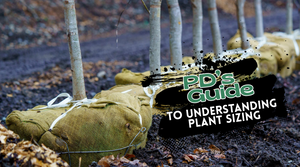Hibiscus Bush
Hibiscus Bush (Hibiscus)
Hibiscus Bush brings big, showy blooms on lush green foliage with a rounded, shrubby habit; select tropical types for continuous warm-season color or hardy types for dramatic midsummer flowers in temperate gardens.
Distinctive Features
Large, eye-catching flowers in vivid reds, pinks, oranges, yellows, whites, or bicolors open on new growth and attract pollinators; glossy or broad, maple-like leaves and a naturally full form create a bold focal point in beds and containers.
Growing Conditions
Give full sun, fertile well-drained soil, and steady moisture for best bloom; choose types suited to your climate or grow tropical forms in containers to winter indoors.
- Sun Exposure: Full sun for at least 6 hours; light afternoon shade in very hot climates.
- Soil: Rich, well-drained loam with added compost; avoid waterlogged sites.
- Water: Keep evenly moist during active growth and flowering; do not allow prolonged drought.
- USDA Hardiness Zones: Tropical hibiscus generally 9 to 11; hardy hibiscus typically 4 to 9.
- Mature Size: Tropical types about 3 to 6 ft tall and wide; hardy types about 4 to 6 ft tall and 3 to 5 ft wide.
- Bloom Time: Tropical forms spring to fall in warm conditions; hardy forms mid to late summer.
- Soil pH: Slightly acidic to neutral, about 6.0 to 7.0.
Ideal Uses
Use as a bold seasonal centerpiece, a long-blooming hedge, or a container feature that moves easily to shelter before frost.
- Focal Point: Oversized blooms create instant curb appeal.
- Mixed Border: Summer color that pairs with grasses and perennials.
- Container Feature: Tropical impact on patios and balconies.
- Screening: Dense foliage forms a seasonal privacy hedge.
- Pollinator Garden: Nectar-rich flowers attract bees, butterflies, and hummingbirds.
Low Maintenance Care
Regular watering, light feeding, and timely pruning keep plants vigorous and floriferous through the warm season.
- Watering: Water deeply when the top 1 in of soil is dry; increase frequency during heat waves and container culture.
- Pruning: Prune in late winter to early spring to shape and encourage new flowering wood; deadhead to tidy.
- Fertilizing: Feed every 4 to 6 weeks in spring and summer with a balanced fertilizer; reduce feeding in fall.
- Mulching: Apply 2 to 3 in of organic mulch to conserve moisture and moderate soil temperature, keeping mulch off stems.
- Notes: Protect tropical forms from frost by overwintering indoors; watch for aphids, whiteflies, and spider mites and manage with strong water sprays or insecticidal soap.
Why Choose Hibiscus Bush?
Few shrubs match hibiscus for sheer flower size and season-long show, whether you garden in a warm climate or grow it as a summer container star.
- Spectacular Blooms: Huge flowers in vivid colors.
- Versatile Habit: Works in beds, borders, and containers.
- Seasonal Impact: Long flowering window with proper care.
- Wildlife Value: Excellent nectar source for pollinators.
- Adaptable Choices: Tropical and hardy types suit many climates.
Plant in full sun with fertile, well-drained soil, keep moisture steady, and prune in late winter to enjoy abundant, show-stopping flowers.

OUR SIZING
Not sure what 2 inch B&B or 30 Gallon Clump really means? This guide breaks down all our plant size terms so you know exactly what to expect, whether you're ordering online or picking up at our nursery. From caliper measurements to container volumes, we've decoded our system to help you shop with confidence.

Plant Detectives Shipping Guide
Nationwide plant shipping made easy. Learn how we ship trees, shrubs, annuals and perennials. No order too big or too small. Fast, careful, and contractor-friendly.



